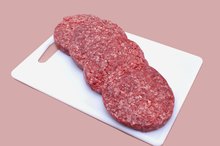What Does a High HDL Level Mean?
HDL, or high-density lipoprotein, is associated with levels of cholesterol in the body. According to the American Heart Association, a HDL level between 40 and 50 milligrams per deciliter, or mg/dl, on a blood test is considered normal. Levels above 60 mg/dl are considered high. HDL levels are important in predicting risk of heart disease. A high level indicates a lower risk of disease.
What Does HDL Do?
HDL is often referred to as "good" cholesterol. The lipoproteins are transporters, carrying cholesterol through the bloodstream. HDLs remove cholesterol from the peripheral tissues and transport it to the liver, where it can be excreted from the body. They also protect the body by preventing cellular uptake of cholesterol and lipids. Thus, increasing HDL helps protect the heart.
What About LDL?
What Is the HDL Risk Factor?
Learn More
Low-density lipoproteins, or LDLs, are known as "bad" cholesterol. Cholesterol carried by LDLs is more likely to be deposited into the tissues and arteries, where it can form artery-blocking plaques. Therefore, a high level of LDL, above 160 mg/dl, is a marker for disease of the heart and blood vessels. If other risk factors exist, such as family history of heart disease, smoking, high blood pressure, diabetes or age greater than 45 for men and 55 for women, doctors may recommend that LDLs be reduced to below 130 mg/dl.
Total Cholesterol Levels
Total cholesterol is a measure of HDLs, LDLs, and other lipoproteins that are present in the blood. The desired level is 200 mg/dl or below for those without other risks for heart disease. With levels of total cholesterol above 240 mg/dl, the risk of heart disease doubles.
Total Cholesterol/HDL Ratio
Zoloft and Cholesterol
Learn More
The ratio of total cholesterol to HDL is considered the best indicator for heart disease risk. Since HDL protects the heart and vessels, increasing the HDL level may be as important as decreasing the total cholesterol. A person with a ratio of 3.4 for men, or 3.3 for women, has half the average risk of heart disease. A person with a ratio of 24 for men, or 11 for women, has three times the average risk.
How Can I Increase HDL?
HDL levels can be increased using a combination of diet, exercise and positive lifestyle changes. Here are some steps towards a high HDL level:
•Aerobic exercise for at least 30 minutes three times a week, every week, elevates HDL levels. •Smoking lowers HDL and increases the overall risk of heart disease. Quit smoking for a healthier heart. •Healthy fats increase HDL levels. Try avocados, olive oil, fatty fish and fish oil. •Soluble fiber decreases LDL and increases HDL. Fruits, vegetables and oatmeal are all good.
Is There a Drug That Increases HDL?
Most drug therapy for cholesterol is aimed at lowering LDL levels, and some cholesterol-lowering drugs will decrease HDL as well as LDL. Diet and exercise are the best choice for now.
Related Articles
References
- National Cholesterol Education Program ATP III Guidelines
- Mosby's Manual of Diagnostic and Laboratory Tests; Kathleen D. Pagana, Ph.D., R.,N., and Timothy Pagana, M.D., F.A.C.S.; 1998
Resources
Writer Bio
Stephanie Draus is a naturopathic doctor and assistant professor of clinical sciences at National University of Health Sciences. She has practiced in Chicago as a health consultant since 2005. She is a graduate of the National College of Natural Medicine in Portland, Oregon.








